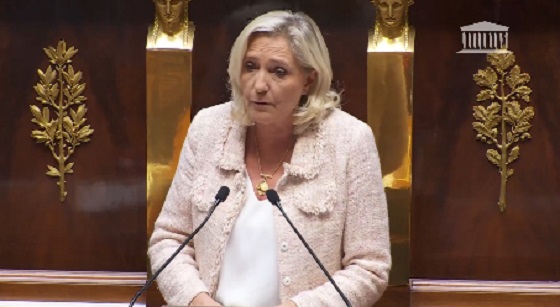National
Mark Carney, Justin Trudeau both deeply tied to WEF, Communist China: report
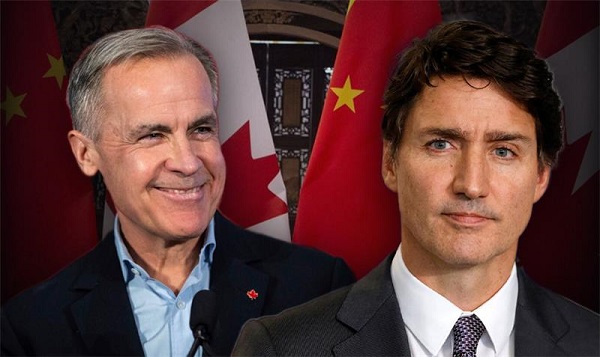
From LifeSiteNews
‘For Canadian voters, understanding the intricate plutocratic web surrounding Trudeau and Carney is not an academic exercise—it offers a glimpse into the forces lining up to shape the nation’s climate, trade, and social policies,’ wrote investigate reporter Sam Cooper.
A new exposé by investigative journalist Sam Cooper claims there is compelling evidence that the Liberal Party’s top leadership candidate Mark Carney is strongly influenced by an “elite network” of foreign actors including those with ties to communist China and the World Economic Forum.
According to a recent article published by Cooper on his The Bureau Substack titled, “The Carney-Trudeau Nexus: How Financial Elites from Davos to Beijing Are Shaping Canada’s Next Federal Election,” Carney, similar to Trudeau, is involved in “a constellation of global influencers deeply tied” to both the WEF and Communist China’s Asian Infrastructure Investment Bank (AIIB).
“At its core, this network of remarkable figures—whose stated goals center on consolidating financial power across borders to coordinate carbon-reduction policies and progressive social outcomes—includes not just Carney and Trudeau but also former Canadian ambassador to China Dominic Barton, Trudeau campaign backers Mark Wiseman and Gerald Butts, and AIIB’s Jin Liqun, reportedly a senior Chinese Communist Party operative,” Cooper relayed in his report.
“For Canadian voters, understanding the intricate plutocratic web surrounding Trudeau and Carney is not an academic exercise—it offers a glimpse into the forces lining up to shape the nation’s climate, trade, and social policies,” the journalist asserted.
Cooper observed that the WEF “has become a lightning rod for both criticism and political polarization,” with opponents accusing it of “fostering undemocratic policymaking, while defenders dismiss such concerns as conspiracy theories.”
He noted that “an objective, network-based analysis of its ties to Beijing’s financial arms and the key figures in Carney’s orbit suggests a well-defined pattern of shared interests.”
Cooper said that “[t]hese interests are likely to drive Canadian governance under Carney—unless he makes the illogical decision to sever ties with the power networks and public-private partnerships that have defined his ascent.”
In the report, Cooper stated that it is an “undebatable fact” that Prime Minister Justin Trudeau and his potential replacement Mark Carney are part of a tangled web with the WEF and Communist China.
He noted that both Trudeau and Carney are “so thoroughly woven together through global forums like the WEF that they are indistinguishable.”
“And while Carney seeks to distance himself from Trudeau’s unpopular record, his closest allies remain the same WEF-linked figures who helped shape Trudeau’s policies,” he added.
Carney’s connections with China are decades old. While serving at the Bank of England, Carney struck a deal with the People’s Bank of China that allowed all banks in England to approve of the Chinese Renminbi currency.
“Helping the internationalization of the Renminbi is a global good, consistent with London’s historic role,” noted Carney in a speech he gave about the move at the time.
Despite the similarities between Carney and Trudeau, which extends beyond their globalists ties to issues such as abortion and the LGBT agenda, the former remains a frontrunner to take over for Trudeau as Liberal leader in a bid by the party to quell the fallout in popularity it has experienced in recent years.
The Liberal Party of Canada will choose its next leader, who will automatically become prime minister, on March 9.
Health
Canadians left with no choice but euthanasia when care is denied

From LifeSiteNews
Ontario’s euthanasia regulators have tracked 428 cases of possible criminal violations without a single criminal charge being laid.
Once again, a government report affirmed what every Canadian should know by now: People are being killed by euthanasia because they cannot access the care they actually need and in some cases are denied that care.
The “choice” that is left to them is a lethal injection. Ontario’s Medical Assistance in Dying (MAiD) Death Review Committee’s (MDRC) latest report, “Evaluating Incurability, Irreversible Decline, and Reasonably Foreseeable Natural Death,” highlights this fact once again.
As Dr. Ramona Coelho, an advocate for people with disabilities and one of the most eloquent opponents of Canada’s MAiD regime highlighted in her analysis of the report, Health Canada dictates that a “person can only be considered incurable if there are no reasonable and effective treatments available (and) explicitly state that individuals cannot refuse all treatments to render themselves incurable, and thereby qualify for MAiD.”
However, the MDRC’s report cites cases that do not appear to qualify:
Consider Mrs. A: isolated, severely obese, depressed, and disconnected from care; she refused treatment and social support but requested MAiD. Instead of re-engaging her with care, MAiD clinicians deemed her incurable because she refused all investigations, and her life was ended.
Or Mr. B: a man with cerebral palsy in long-term care, he voluntarily stopped eating and drinking, leading to renal failure and dehydration. He was deemed eligible under Track 1 because his death was consequently considered “reasonably foreseeable.” No psychiatric expertise was consulted despite signs of psychosocial distress.
Or Mr. C: a man in his 70s with essential tremor, whose MAiD provider documented that his request was mainly driven by emotional suffering and bereavement.
In short, Coelho concludes, “Canada’s legal safeguards are failing. Federal guidelines are being ignored. The public deserves to know: Is Canada building a system that truly protects all Canadians – or one that expedites death for the vulnerable?” It has been clear what kind of system we have created for some time, which is why Canada is considered a cautionary tale even in the UK, where assisted suicide advocates violently and indignantly object to any comparisons of their proposed legislation and the Canadian regime.
The National Post also noted examples found in the MRDC’s report, noting that: “A severely obese woman in her 60s who sought euthanasia due to her ‘no longer having a will to live’ and a widower whose request to have his life ended was mainly driven by emotional distress and grief over his dead spouse are the latest cases to draw concerns that some doctors are taking an overly broad interpretation of the law.”
None of this seems to concern the federal government, much less law enforcement. Horror stories are simply not addressed, as if ignoring them means that they did not happen. Constant revelations of lawbreaking are met with silence. “A quarter of all Ontario MAiD providers may have violated the Criminal Code,” journalist Alexander Raikin warned last year in The Hub. “Does anyone care?” In fact, Ontario’s euthanasia regulators had tracked 428 cases of possible criminal violations – without a single criminal charge being laid.
“Canada’s leaders seem to regard MAiD from a strange, almost anthropological remove: as if the future of euthanasia is no more within their control than the laws of physics; as if continued expansion is not a reality the government is choosing so much as conceding,” Elaina Plott Calabro wrote in The Atlantic recently. “This is the story of an ideology in motion, of what happens when a nation enshrines a right before reckoning with the totality of its logic.”
There is an opportunity to stop the spread of Canada’s MAiD regime. MPs Tamara Jansen and Andrew Lawton are championing the “Right to Recover” Act, which would make it illegal to euthanize someone whose sole qualifying condition is mental illness. I urge each and every reader to get involved today.
Frontier Centre for Public Policy
Every Child Matters, Except When It Comes To Proof In Kamloops
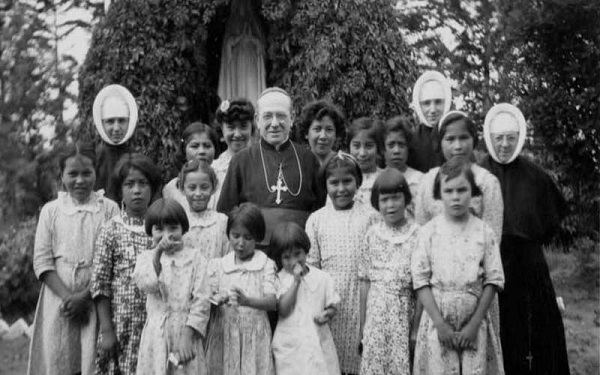
From the Frontier Centre for Public Policy
If murdered women justify landfill digs in Winnipeg, why hasn’t Kamloops lifted a shovel for its alleged 215 child graves—despite $12 million and four years of national mourning?
Winnipeg searched a landfill to honour Indigenous women, but Kamloops has yet to dig a few feet for its missing children
If Canadians are serious that every child matters, we should at least know the names of the “missing” Indian Residential Schools children about whom we hear almost daily in mainstream media reports.
There are frequent reports of news conferences staged by Indigenous band leaders proclaiming new ground-penetrating radar (GPR) “discoveries” of unmarked graves at former residential schools. GPR detects soil disturbances, but it cannot confirm whether they are human remains or even graves. The reality is that the small number of excavations which have occurred have yielded no human remains, despite stories of clandestine burials told by Indigenous knowledge keepers.
By contrast, in Winnipeg, excavations have been happening at landfills to search for the bodies of Indigenous women murdered by a serial killer. Yet after more than four years of gut-wrenching stories about the apple orchard at the former Kamloops Indian Residential School, not a single excavation has been carried out to confirm the alleged burial of more than 200 children.
On May 27, 2021, the Tk’emlúps te Secwépemc First Nation announced that radar had revealed anomalies consistent with possible graves near the former school. Following that announcement, many First Nations made similar claims based on GPR. Yet no band, including Kamloops, has identified a single missing child by name. Kamloops alone has received $12 million in federal funding for excavation work, but no digging has taken place, and no explanation has been given for the delay.
Are we serious? If murdered Indigenous women in Winnipeg matter enough to prompt landfill searches, why don’t the children allegedly buried at Kamloops matter enough for an excavation?
Sometimes it seems Canadians are far too willing to look away, even at the risk of being disingenuous. The Heather Stefanson government in Manitoba was defeated in the 2023 election, famously because it refused to search landfills for murdered Indigenous women. Yet the Kamloops allegation—one of the gravest ever levelled in Canadian history, involving the alleged murder and burial of more than 200 children—remains untested.
In the meantime, copycat “discoveries” have spread across the country, the media has fanned a moral panic at home and abroad, orange T-shirts have become a fixture, and schoolchildren are taught that allegations of murder, rape, mayhem and mass graves are fact. Orange Shirt Day and the phrase “Every Child Matters” became national symbols of reconciliation after the Kamloops announcement, further entrenching the narrative.
In Manitoba, Morgan Harris and Marcedes Myran, two Indigenous women murdered in Winnipeg, mattered. Their families and communities mattered. If First Nations in B.C. and elsewhere—and indeed all Canadians—truly believe every child matters, and if many still believe there are children buried at Kamloops, why are Canadians kept in the dark? Indigenous families in particular are being told, and teaching their children, that genocide explains the inequality—social, economic and otherwise—they endure today.
It’s tempting to blame governments for fuelling the panic or the mainstream media for refusing to ask basic questions. Yes, they bear responsibility. But the spark came from Kamloops, and only Kamloops can settle this. Its own GPR specialist recommended excavation. That would prove whether bodies exist, identify who the children were, and reconnect them to their families and communities.
Instead, Canadians are asked to accept the story on faith. After four years with no excavation and no names, credibility is stretched to the breaking point.
Consider the contrast: Manitoba Premier Wab Kinew says $18 million was spent to dig through thousands of tonnes of hazardous landfill to recover the remains of Morgan and Marcedes. Kamloops, with $12 million to dig just a few feet, has yet to act.
Something is wrong with this picture. Either compassion for Indigenous children is missing, or the “missing” children aren’t missing at all.
Where is that compassion Canadians love to think they possess?
Or is it simply not true that every child matters?
James C. McCrae is a former attorney general of Manitoba and Canadian citizenship judge.
-

 espionage21 hours ago
espionage21 hours agoInside Xi’s Fifth Column: How Beijing Uses Gangsters to Wage Political Warfare in Taiwan — and the West
-
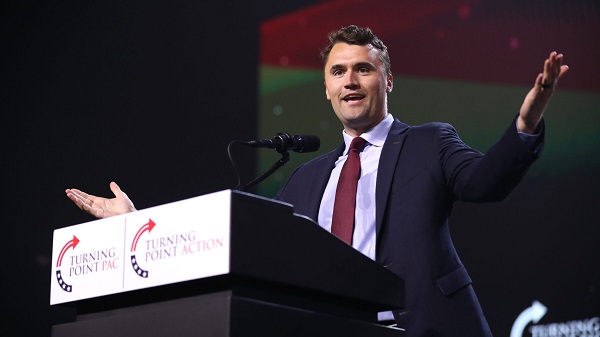
 J.D. Tuccille2 days ago
J.D. Tuccille2 days agoAfter Charlie Kirk’s Murder, Politicians Can Back Away From the Brink, or Make Matters Worse
-

 International2 days ago
International2 days agoCharlie Kirk Shooting Suspect Revealed: Here’s What His Ammunition Said
-
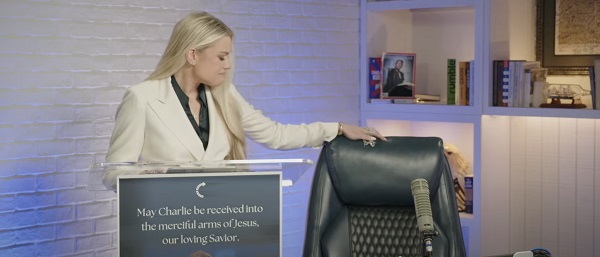
 Daily Caller2 days ago
Daily Caller2 days ago‘You Have No Idea What You Have Unleashed’: Erika Kirk Addresses Supporters For First Time Since Kirk’s Assassination
-

 Censorship Industrial Complex21 hours ago
Censorship Industrial Complex21 hours agoDecision expected soon in case that challenges Alberta’s “safe spaces” law
-

 COVID-1914 hours ago
COVID-1914 hours agoWhy FDA Was Right To Say No To COVID-19 Vaccines For Healthy Kids
-

 Energy14 hours ago
Energy14 hours agoTrump Admin Torpedoing Biden’s Oil And Gas Crackdown
-
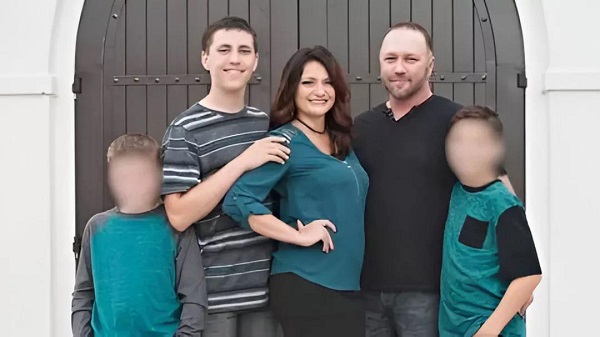
 Crime2 days ago
Crime2 days agoFormer NYPD Inspector Shares What Family Of Alleged Charlie Kirk Assassin Feared Before Turning Him In




